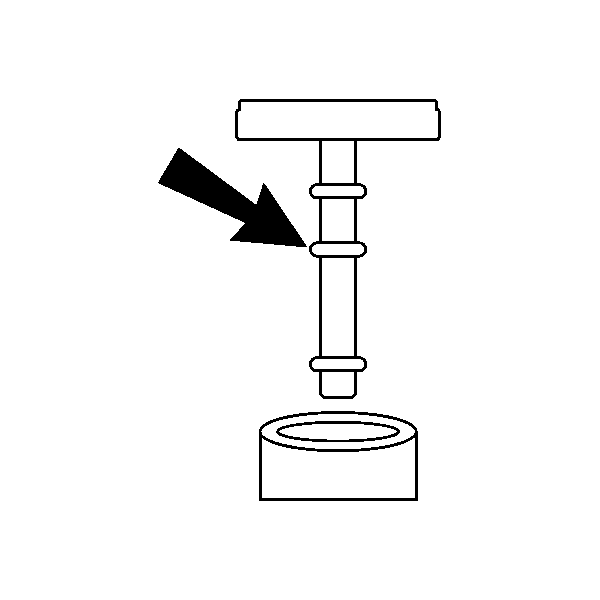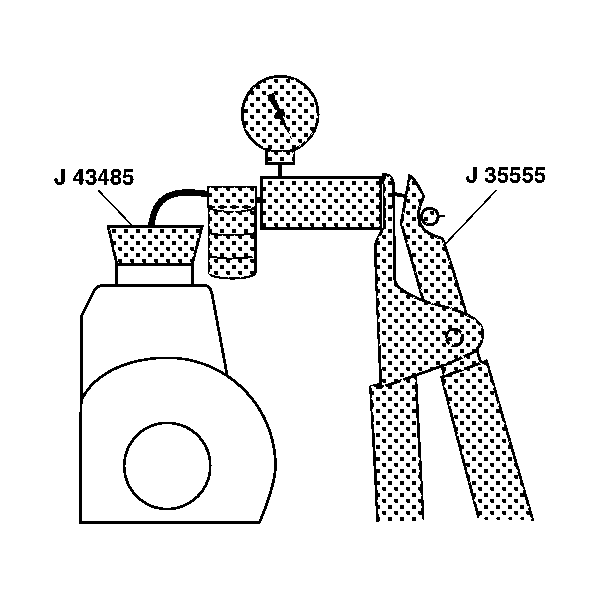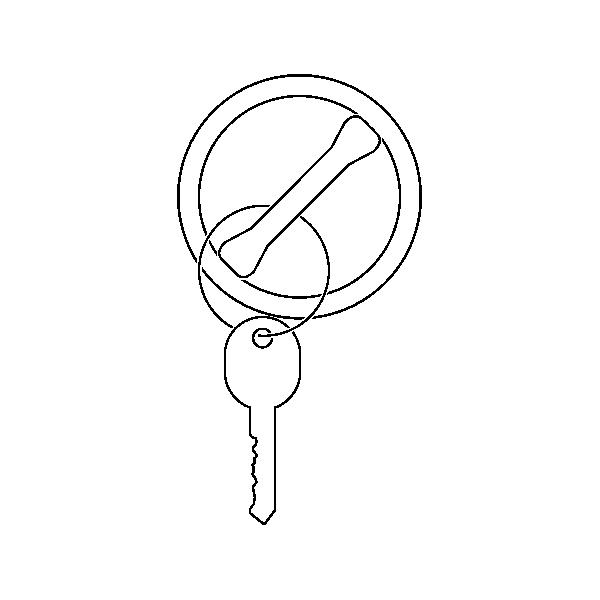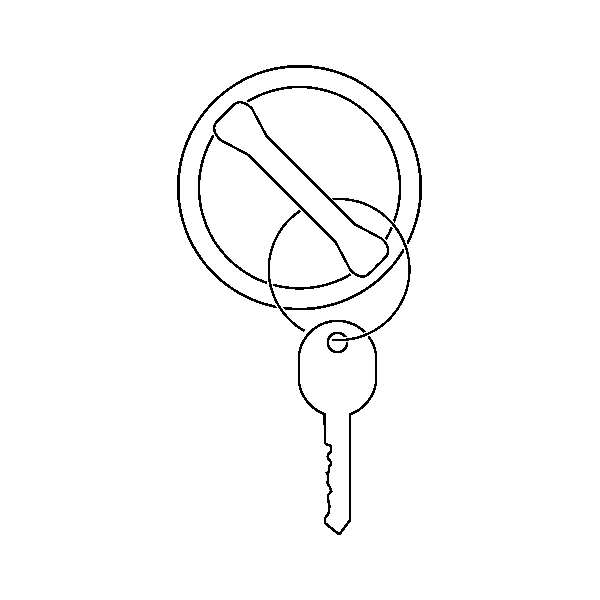Bleed Procedure
Tools Required
| • | Bleed the power steering system for the following reasons: |
| - | Power steering system components replaced |
| - | Power steering fluid line disconnected |
| - | Power steering system noise occurs |
| - | Prevention of power steering pump damage |
| - | Proper power steering system operation |
| | Important: Use the proper,NEW power steering fluid only.
|
| • | See the Maintenance and Lubrication subsection for fluid specifications. |
Important: Power steering hoses touching the frame, body or engine can cause system
noise.
- The power steering hoses must not touch any other part of the vehicle.
Important: Loose power steering connections may not leak, but could allow air into
the power steering system.
- Verify that all power steering hose connections are tight.

Important: Maintain the power steering fluid level throughout the bleeding procedure.
- Remove the power steering pump reservoir cap.
- Fill the power steering pump reservoir with power steering fluid
to the "FULL COLD" level.

- Attach the J 43485
to the J 35555 or an equivalent.
- Place the J 43485 on the power steering pump reservoir
filler neck.
- Apply a vacuum of 20 Hg. maximum.
- Wait 5 minutes.
- Typical vacuum drop is 2-3 in Hg. If the vacuum does not
remain steady,refer to Special Conditions at the end of this procedure.

- Reinstall the power steering
pump reservoir cap.
- Start the engine. Allow the engine to idle.
- Turn off the engine.
- Verify the power steering fluid level. Repeat steps 8 through
10 until fluid stabilizes.

- Start the engine. Allow
the engine to idle.
Important: Do not turn steering wheel to lock.
- Turn the steering wheel 180-360 degrees in both directions
5 times.

- Switch the ignition off.
- Verify the power steering fluid level.

- Remove the power steering
pump reservoir cap.

- Attach the J 43485
Power Steering Bleeder Adapter to the J 35555 Mity Vac or an equivalent.
- Place the J 43485 Power Steering Bleeder Adapter on the
power steering pump reservoir filler neck.
- Apply a vacuum of 20 Hg. maximum.
- Wait 5 minutes.
- Typical vacuum drop is 2-3 in Hg. If the vacuum does not
remain steady,refer to Special Conditions at the end of this procedure.

- Reinstall the power steering
pump reservoir cap.
Special Conditions Procedure
Tools Required
- J 35555
- J 43485

- If the vacuum continues
to drop, remove the power steering pressure and the power steering return
hose from the power steering pump.
- Install the plugs (1),(2) supplied with J 43485

- Attach the J 43485
Power Steering Bleeder Adapter to the J 35555 Mity Vac or an equivalent.
- Place the J 43485
- Apply a vacuum of 20 Hg maximum.
- If the vacuum drops again, repair or replace the power steering
pump. If the vacuum holds steady, continue to check the other parts of the
power steering system.
Important: Power steering fluid must be free from bubbles. Be aware of periodic
bubbles that indicate a loose connection or leaking O-ring seal in the power
steering return hose or the power steering pressure line.
Important: Power steering fluid must be free from discoloration.
- Observe the power steering fluid.
- If condition persists, replace the following parts:
| • | The return hose O-rings |
| • | The pressure hose O-rings |
| • | The gear cylinder line O-rings |
| • | The reservoir to pump O-ring |
- Repeat the power steering bleeding procedure from the beginning.
- Drive the vehicle approximately 16 kilometers (10 miles)
to warm the power steering system to operating temperature. Evaluate vehicle
on a smooth flat surface.
- To check for noise problems, verify the following items:
| • | There is smooth power assist. |
| • | The vehicle operates quietly. |
| • | The power steering pump maintains the proper power steering fluid
level. |
| • | There is no leaking in the power steering system. |
| • | The power steering fluid is free of foam or discoloration. |










